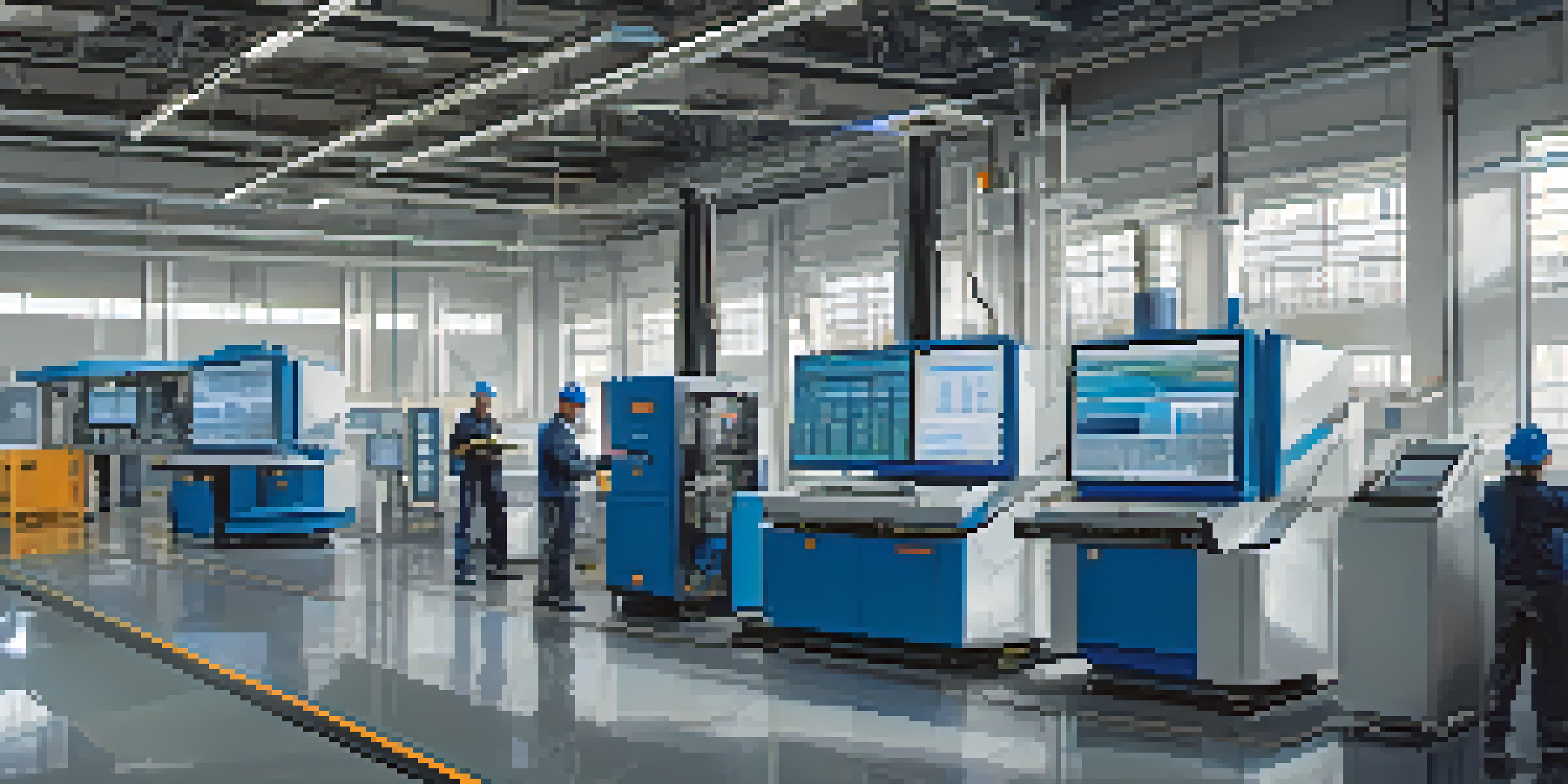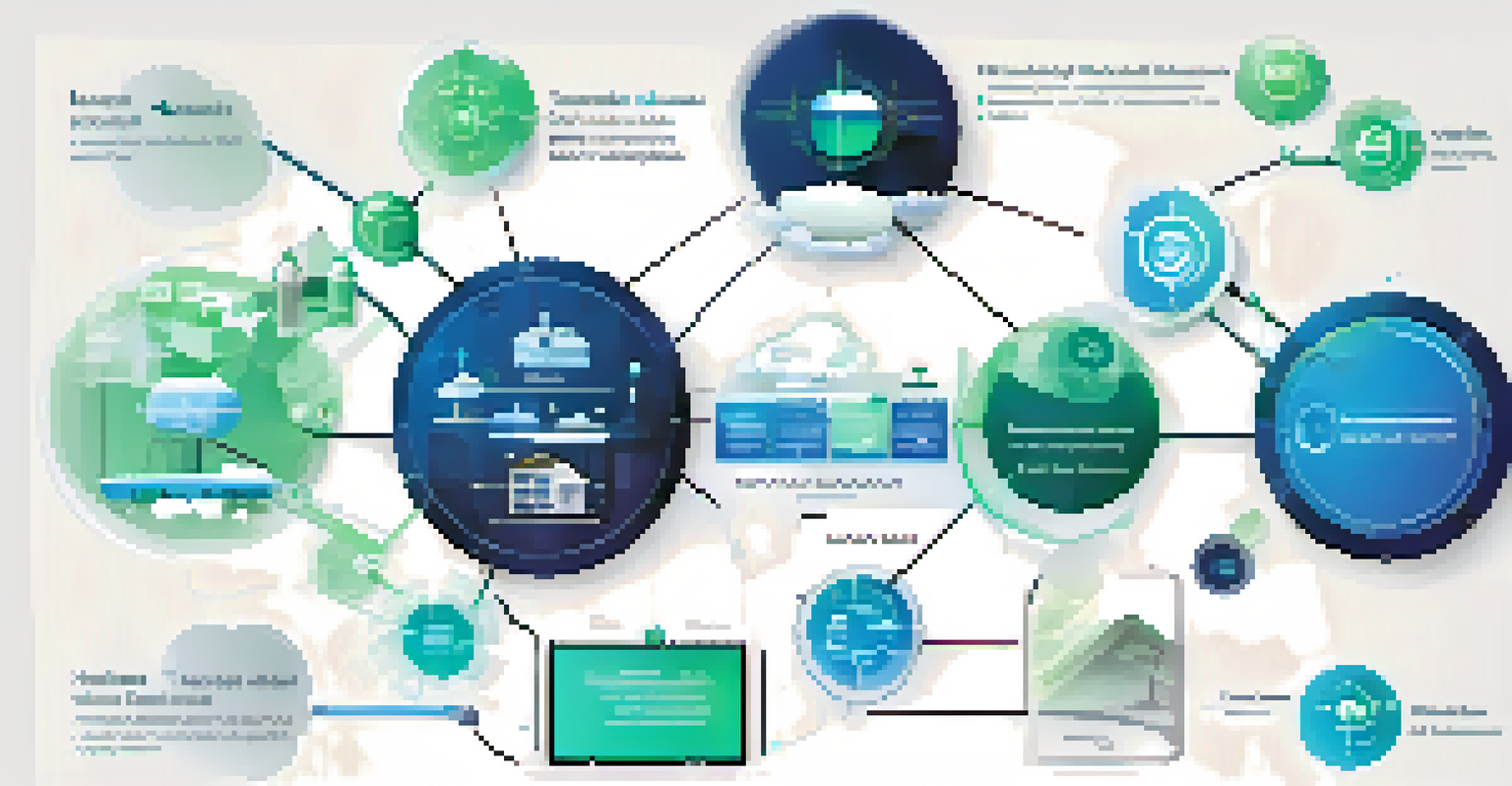AI and Predictive Maintenance: A New Era of Efficiency

Understanding Predictive Maintenance and Its Importance
Predictive maintenance is a proactive approach that uses data analytics to predict when equipment will fail, allowing for timely interventions. This strategy reduces downtime and extends the lifespan of machinery, ultimately saving businesses money. In industries like manufacturing and transportation, where equipment failure can lead to significant losses, predictive maintenance is becoming essential.
The greatest danger in times of turbulence is not the turbulence; it is to act with yesterday's logic.
By leveraging historical data and real-time monitoring, companies can identify patterns that indicate potential failures. For instance, if a machine consistently shows increased vibration levels before breaking down, predictive maintenance can signal the need for inspection or repair. This shift from reactive to proactive maintenance not only enhances operational efficiency but also improves safety and reliability.
Moreover, as industries evolve and become more data-driven, the importance of predictive maintenance will only increase. Companies that adopt this approach can gain a competitive edge by minimizing disruptions and optimizing resource allocation. This sets the stage for a more efficient operational framework across various sectors.
How AI Enhances Predictive Maintenance Capabilities
Artificial Intelligence (AI) plays a crucial role in elevating predictive maintenance strategies. By processing vast amounts of data quickly and accurately, AI algorithms can identify subtle signals that might be overlooked by human analysts. This ability to detect anomalies in real-time enables businesses to act before issues escalate, ensuring smoother operations.

For example, AI can analyze data from sensors embedded in machinery to monitor performance metrics continuously. If a machine shows signs of wear or an abnormal pattern, AI can alert maintenance teams immediately, allowing them to schedule repairs without disrupting production. This level of insight transforms maintenance from a scheduled task to a dynamic, data-driven process.
Predictive Maintenance Saves Money
By anticipating equipment failures, predictive maintenance minimizes downtime and reduces repair costs, ultimately benefiting a company's bottom line.
AI's predictive capabilities are further enhanced through machine learning, which allows algorithms to improve over time as they process more data. This continuous learning cycle means that the accuracy of predictions will only get better, leading to more effective maintenance strategies. As a result, businesses can achieve higher efficiency and lower costs.
The Role of IoT in Predictive Maintenance
The Internet of Things (IoT) is a game-changer in the realm of predictive maintenance. By connecting devices and machines to the internet, IoT enables real-time data collection and analysis. This connectivity allows companies to monitor equipment conditions from anywhere, ensuring they have up-to-date information to inform maintenance decisions.
Data is the new oil. It’s valuable, but if unrefined, it cannot really be used.
For instance, a fleet management company can use IoT sensors to track the performance of its vehicles. If a truck experiences a drop in fuel efficiency or unusual engine sounds, the system can alert managers to potential issues. This immediate feedback loop helps in scheduling maintenance before a breakdown occurs, reducing the risk of costly repairs and downtime.
Furthermore, the integration of IoT with AI creates a powerful synergy. While IoT provides the data, AI interprets it, enhancing the predictive models used in maintenance strategies. This combination empowers businesses to move toward a more efficient and streamlined operation, showcasing the importance of technology in modern maintenance practices.
Cost Benefits of AI-Driven Predictive Maintenance
Implementing AI-driven predictive maintenance can lead to significant cost savings for businesses. By reducing equipment downtime, companies can avoid the high costs associated with emergency repairs and lost productivity. For example, a manufacturing plant that experiences a machinery breakdown may face thousands in lost revenue per hour.
Additionally, predictive maintenance helps optimize maintenance schedules, allowing companies to perform maintenance only when necessary. This leads to lower labor costs and reduced parts inventory, as businesses are no longer stockpiling replacement parts for machines that may not need them. Such efficiency translates into a healthier bottom line.
AI Enhances Maintenance Strategies
Artificial Intelligence improves predictive maintenance by analyzing data in real-time, allowing businesses to act swiftly on potential issues.
Moreover, by extending the lifespan of equipment through timely interventions, companies can maximize their investments. Rather than replacing machines prematurely, businesses can ensure that their assets are operating at peak performance for longer periods. This holistic approach to maintenance not only saves money but also contributes to sustainable practices.
Challenges in Adopting AI for Predictive Maintenance
While the benefits of AI in predictive maintenance are enticing, several challenges can hinder its adoption. One major hurdle is the initial investment required for AI technologies and IoT infrastructure. Companies may hesitate to allocate funds, especially if they are unsure of the return on investment.
Another challenge is the integration of AI with existing systems. Many businesses rely on legacy equipment that may not be compatible with modern AI solutions. This can create a barrier to entry, as organizations need to invest time and resources in upgrading their technology to fully leverage predictive maintenance strategies.
Lastly, there’s a skills gap in the workforce. As AI technologies evolve, the demand for skilled personnel who can manage and interpret this data increases. Companies must invest in training and development to equip their teams with the necessary skills to harness the full potential of AI-driven predictive maintenance.
Real-World Examples of AI and Predictive Maintenance
Many organizations are already reaping the rewards of AI-enhanced predictive maintenance. For instance, GE Aviation uses predictive analytics to monitor their jet engines in real-time. By analyzing engine performance data, they can predict maintenance needs, significantly reducing unexpected failures and maintenance costs.
Similarly, Siemens employs AI-driven predictive maintenance in its manufacturing processes. By leveraging data from sensors, they can optimize production schedules and reduce downtime. This not only improves efficiency but also enhances the overall quality of their products.
IoT Connects for Real-Time Insights
The Internet of Things enables continuous data monitoring and analysis, facilitating proactive maintenance decisions across various industries.
These examples illustrate the tangible benefits of adopting AI in predictive maintenance strategies. As more companies share their success stories, the trend toward AI integration is likely to accelerate across various industries, proving that the future of maintenance lies in data-driven decision-making.
The Future of AI in Predictive Maintenance
Looking ahead, the future of AI in predictive maintenance appears bright. As technology continues to advance, we can expect even more sophisticated AI algorithms that can provide deeper insights and more accurate predictions. This evolution will enable businesses to adopt a more strategic approach to maintenance that is both efficient and cost-effective.
Moreover, with the growing emphasis on sustainability, AI-driven predictive maintenance can contribute to greener practices. By optimizing equipment performance and reducing waste, companies can not only save money but also minimize their environmental impact. This alignment with sustainability goals is becoming increasingly important for businesses in today’s eco-conscious market.

Finally, as AI technology becomes more accessible, smaller businesses will also be able to leverage its benefits. The democratization of AI tools will level the playing field, allowing companies of all sizes to enhance their maintenance strategies. This shift will lead to widespread adoption of predictive maintenance, marking a new era of efficiency across the industrial landscape.